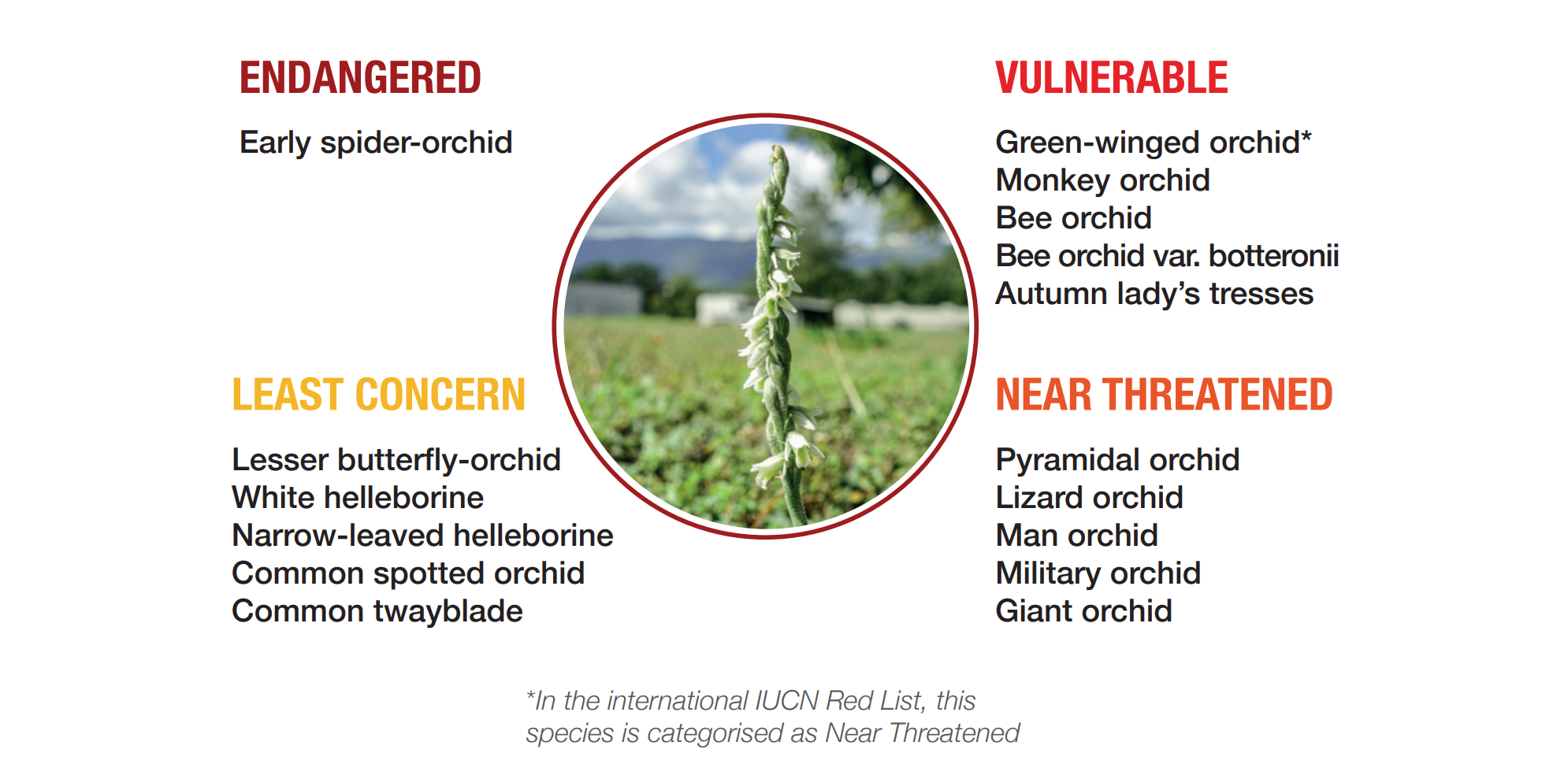CERN has three wetlands, 136 hectares of woodland and 258 hectares of cultivated fields and meadows under its stewardship. Since 2009, CERN has held the Swiss Nature & Economie Foundation’s label of quality in recognition of its efforts to protect biodiversity.
Preserving the landscape
CERN uses low-intensity maintenance of its land to foster biodiversity preservation, keeping watering to a minimum and eliminating fertilisers and chemicals as much as possible. Woodlands in the Pays de Gex, France, are an important local resource. Those on CERN land are jointly managed by CERN and the French National Forests Office (ONF).
In 2020, CERN discovered a new orchid species, the Autumn Lady’s-tresses, on its site, bringing the total to 16 species. The Organization has the largest variety of orchids to be found anywhere in the Geneva basin. The International Union for Conservation of Nature (IUCN) Red List has categorised one, the green-winged orchid, as near threatened. Eleven of the species are on the Swiss national conservation list, as shown in the graphic.

Planning for the future
Managing the impact of CERN’s activities on the environment and landscape of the neighbouring region is of pivotal importance to the Organization. In 2015, CERN created a 15-year masterplan, a strategic framework to support the Laboratory’s site development. The plan includes short-, medium- and long-term goals centred on four themes: urban planning, mobility, environment, and landscape. A revision of the current masterplan is in progress. It adopts biodiversity-positive principles and standards in the planning and implementation of CERN's facilities, both new builds and renovation projects. Measures are being developed not only to preserve CERN's natural heritage, but also to strengthen biodiversity on the land under CERN’s management.
In 2020, the CERN Environmental Protection Steering Board (CEPS) launched a working group on biodiversity to identify actions to be implemented with four key objectives: conserving and protecting natural spaces in the CERN domain; developing biodiversity in fenced and unfenced areas; establishing measures for biodiversity for new development projects on CERN sites; and defining indicators to monitor biodiversity at CERN.
CERN has co-signed a charter initiated by WWF Geneva for the revitalisation of the Nant d’Avril watercourse. In addition to improving water quality, the project will boost biodiversity in the entire watershed. It includes building natural riverbanks to promote re-colonisation by certain target species(see Water and effluents).
In focus
Mathieu Fontaine, head of Green Spaces and Biodiversity service at CERN.
— What is your vision for CERN’s green spaces in the future?
MF: There are many ideas and dreams about improving biodiversity on the CERN sites. For example, planting new trees, and creating a procedure to compensate for each felled tree on both the French and Swiss parts of the Organization’s sites. CERN is a pioneer in physics and technology, and we would like CERN to set an example for responsible land management in the region, using the same principles to manage the fenced and unfenced areas, which include woodland and land leased to local farmers. It is also my mandate, and a pleasure, to communicate with and educate my CERN colleagues and our neighbours about CERN’s biodiversity protection efforts.
Learn more
Questions regarding this report may be addressed to environment.report@cern.ch.
